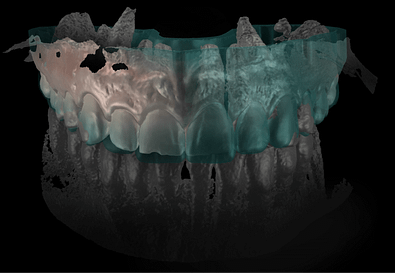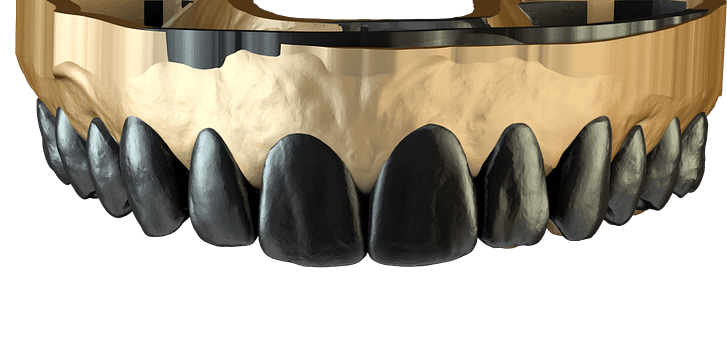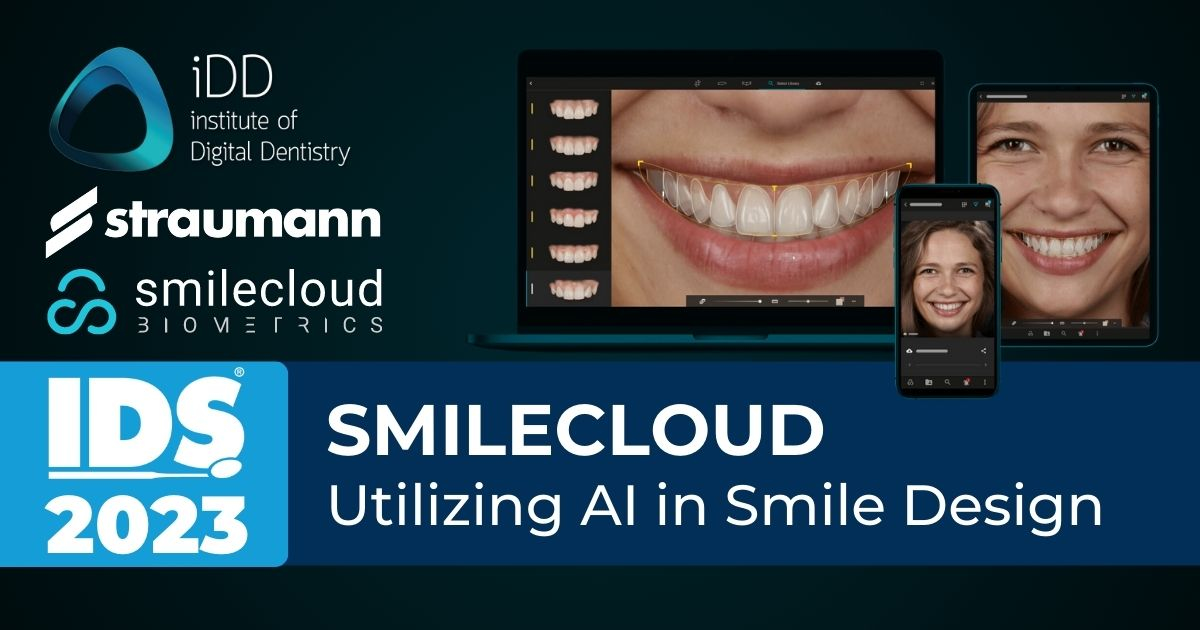One such company utilizing AI in smile design is Smilecloud.
Smilecloud is a software that allows clinicians to design virtual mock-up smiles for patients supported by AI technology and 3D biometric libraries to achieve the best possible outcome for patients.
Smilecloud improves collaborations with dental professionals and can help improve interaction with patients.
The company was recently invested in by Straumann, so we chatted with co-founder Florin Cofar at IDS 2023 about all the exciting things the company is doing.
You can read the blog below or enjoy our interview from IDS 2023.
Could you provide some insight into the background of Smilecloud and what motivated you to create it?
My background has always been clinical, so I've always been hands-on in treating patients and being involved in education in digital dentistry for quite a long time. And obviously, every technology out there exists to solve problems, right?
One frequent problem that we keep seeing over time is fragmented data, which is lying around the different devices and is communicating peer-to-peer, which is obsolete today.
In every other field, we want a centralized data platform and obviously, we want that too in dentistry. Something that is cloud and ideally web-based.
We approached the idea of design, and we went into smile design, where I think what differentiates us is a high level of automation with the use of AI and a high level of photorealism, which means you get a life-like look.
And last but not least is this is the idea of using biometric data, which means in simple words, natural tooth shapes. And essentially we do design as a sort of search engine for anatomy that renders in real time how different compositions of teeth would look.
And the beautiful thing about it is that it doesn't just output a simple picture. It outputs also the anatomy. So you can go to the other software and have a follow-up of what you design and show to the patient.
So we've got a patient communication tool as well as a collaboration tool and AI to improve and speed up design?
Exactly.

Smilecloud was formerly an independent company, and you've recently had Straumann invest. Is that correct?
Yes. At some point, it's the bigger picture that becomes more important. We need to assess our capabilities independently, and I believe that we are content with our current progress and efforts. But we are equally excited to play a bigger game in terms of real change. And for that, I think a partner like Straumann makes a lot of sense because of all the synergies we can create together.
Actually, this partnership is very special because it's very uncommon that there are almost zero overlaps between what the companies offer. It's very complimentary, and it's also, in terms of the vision of the people equally important. I think we have a very good fit, so I'm happy about this.
We've had discussions with various individuals about who’s going to address the software challenge of integrating with multiple systems and improving the import and export process. It appears that you are taking on this task.
Yes. We will obviously be competing for that role. And I think we're in a good position for that.
Integration-wise, do you integrate with different practice management systems yet?
At this point, our focus is not so much on practice management systems but on giving more use cases for the user. We want to integrate with guided surgery, which is what we announced now with Straumann, which we call Diagnostics.
Then we're going to integrate ortho and eventually CAD. PMS will come but will be at a later stage and for a very pragmatic reason. The PMS market is very fragmented, so in order to have a real impact, you really need to go and consolidate, and it's more complicated.
Yeah, it’s very different from region to region with different healthcare systems. It's a big challenge. Currently, you've got the implant workflow. Do you think the orthodontic workflow will be available later this year?
Aspirationally, yes. But development is not my expertise, we always want to get it as fast as possible, but I would say realistically, probably an initial level might happen this year, but we will not achieve a completed product this year for sure. We need more depth there.
There's a lot of development that goes into this. What is the clinical time advantage of using the software?
In simple words, what we developed is simplicity. So in this sense, I think everything that we currently have as an offering is significantly faster than alternatives. To give you an example of a design, you can currently do a design in four clicks, and we're gonna get it down from those four.

Are four clicks too many?
Yes, four is too many because we want the user to start from a draft already, and what they invest in the process should be only depth. So it should be almost instant to the actual process. We want to avoid preliminary steps. We want it to start from a draft, and from that point on, you only invest in depth, which is obviously an individual decision.
In terms of production with 3D printers and other output devices, are you developing anything?
Further down the line, there are some things planned, but it's too early to discuss that.
Can the program allow you to export an STL and bring it into our slicing software and print it?
Yes. Right now you export it, and you just go to a 3D printing software and print it. It's not a direct connection, but it gives you all the freedom and let's be honest, it's not really a complicated thing to do.
Is it an open system or just Straumann's range?
The goal of both companies is to stay open, but obviously, in our collaboration, we will prioritize what we can do together first, and after that, of course, we will promote openness or, let me put it this way, openness is not something that will ever change. It's just the priorities, obviously strategically, there are some things we need to consider.
Undoubtedly, a large number of individuals can reap the benefits of guided surgery. According to reports, the guided surgery market has yet to exceed 25%, indicating that many more individuals could benefit from this technology.
Yes.
Thank you for your time. Very exciting and great to meet you.
Thank you. It's a pleasure.

